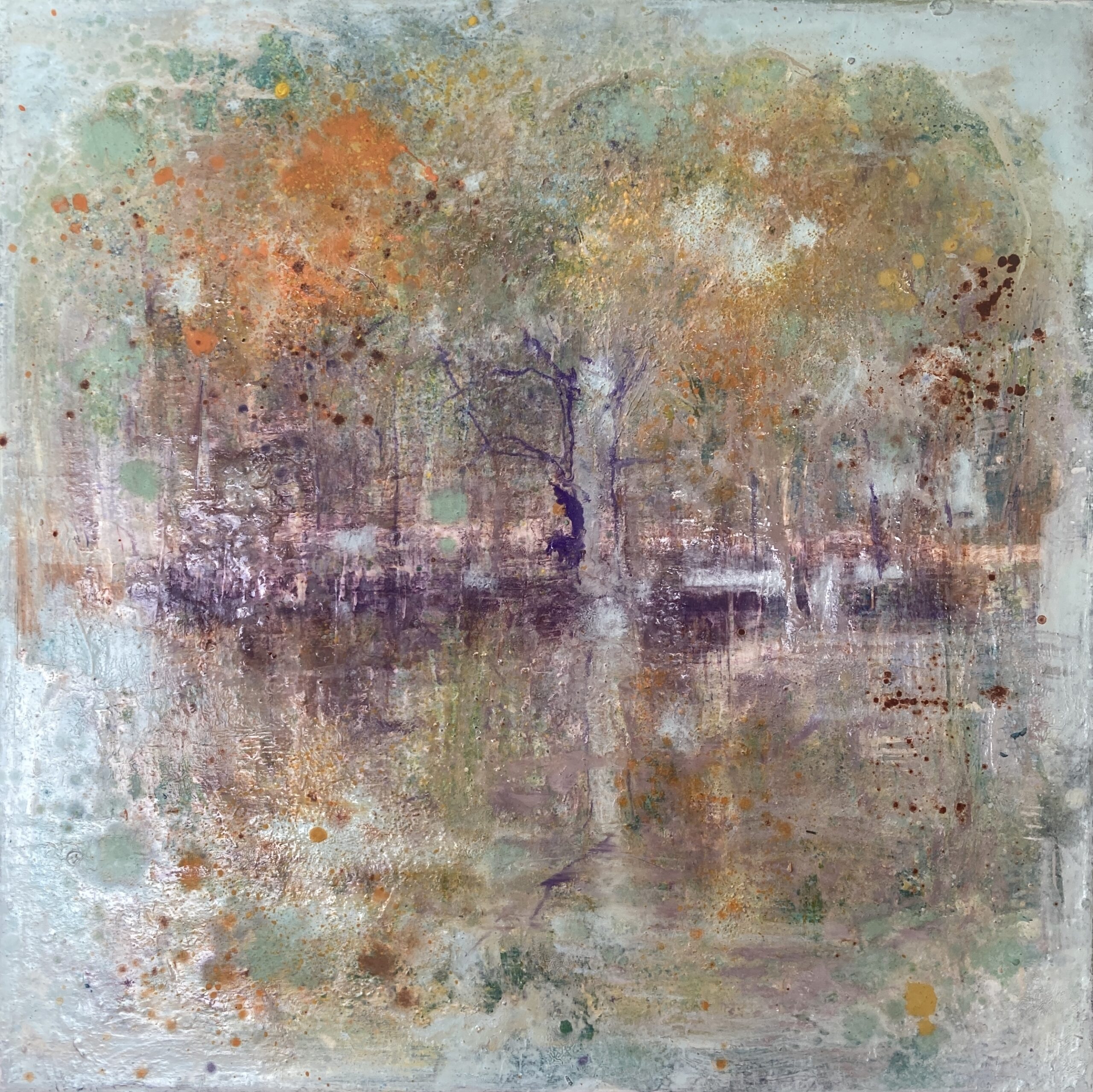Andy Warhol stated that each person would have 15 minutes of fame.
He also strove to remove the handmade quality of Art, trying to make it mechanical, in part reflecting the popular media images of his society. I doubt he ever thought it possible that anyone could have an opportunity to be an artist for 15 minutes but, due to today’s advances in technology, it now is.
Post-Conceptual Art, which uses symbols for each and every stroke to create imagery, offers innovation through its strokes. The symbols are painted or drawn, allowing the artist to add intrinsic meaning to their work: to convey narrative imagery and imbue the work with emotional content. It takes the skill of a trained artist to create Post-Conceptual Art, as technology can’t take a photograph and turn the image into layers of symbol-strokes. Am I struggling to make my work relevant in the world — and the art world — filled with technology?
While painters struggle to innovate, or to adapt uniquely to new ideas for and of painting which can ward off the continuing onslaught of technology, one lesson from the past is clear. The history of Western Art shows that, although people may continue collect the art touted in their own time by “experts”, in the long run it’s the work of artists who innovate and who communicate meaningful visual ideas which is more apt to last and to have meaning for future generations.
I don’t want to tell anyone what to think: I hope they’ll find their own story in the paintings. I’m reluctant to over-explain the imagery, but I’m happy to discuss concepts and the thinking process that creates its own narrative. Some artists seem to think talking about their work means telling people what and how to think: the risk in this approach is that you bore people to death and circumscribe meaning.
That said, there’s a good reason for explaining the context for a painting or body of work. The context sets the stage — just as in the theatre, where we have a programme to explain the background to character and set the scene for the experience we are about to undertake. Before we can sit back to enjoy the play, we want to know a little about the circumstances.
The Impressionists began what became Modern Art, based on new scientific understandings about light. Those same understandings also helped inspire and develop still Photography and, soon after, Film. For the first time in history, artists were displaced from recording current events and scientific discoveries and from creating portraits of people who wished to be remembered.
While this encouraged Modern and now Contemporary artists to explore new forms of Art, materials and ways of communicating visual understanding, many painters struggled to compete with Photography by offering non-realistic image work, following the ideas of the Cubists, Abstract Expressionism or Word Art — or, like Andy Warhol, incorporated photography into their painted art and prints.
There are many contemporary painters, such as Cecily Brown, Marlene Dumas, Sheila Fell, Dana Schutz and Elisabeth Payton to name just a few. They take us into their own unique visual worlds through the strokes of their brushes, and are able to convey thoughts, feelings and emotions through the physical application of paint onto canvas.
